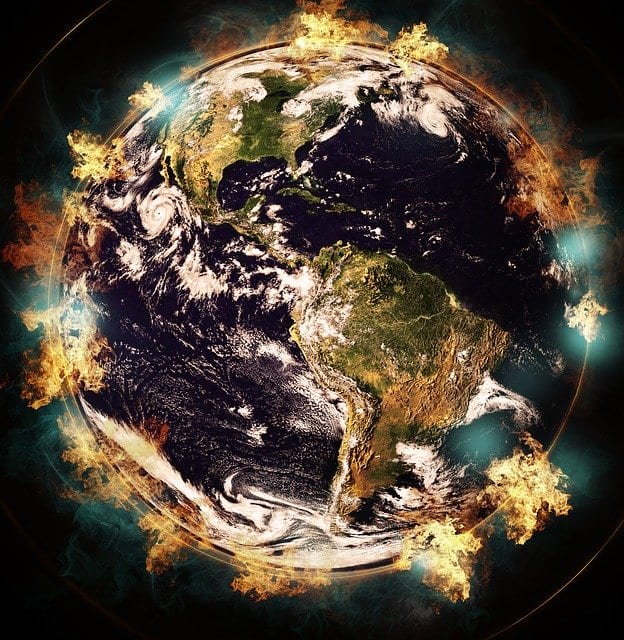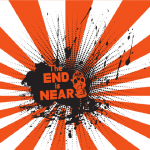
Paul Connors critiqued at some length the reasoning in my article yesterday about coronavirus, “Black Death” Mentality On Display at Patheos Catholic” in the combox for that piece. Of course, I counter-replied. His words will be in blue (and if he responds further, all of that and my replies will be added here).
*****
While there are definitely exaggerations in posts from other authors, your own post is a view through strongly rose-colored glasses, mixed with a few misleading statements. Have you read the original paper by Ferguson (et al)? All of it is here:
Impact of non-pharmaceutical interventions (NPIs) to reduce COVID-19 mortality and healthcare demand
There are some very important caveats in that paper, which have to be taken into account before drawing any conclusion about exactly what the current status of the virus’s impact is, and what may too easily happen in the future.
Tell me what you think are misleading statements and why. Thanks!
Read the original paper. Reading the original has been my rule for understanding Catholic theology correctly and, unsurprisingly, it works just as well for science. I’m sure that various governments (or their advisors) have taken on board what those simulations show, because they are very unsure what to do next.
That won’t tell me what you think are misleading statements in my paper. If you wanna make some criticism of me, then you’re gonna have to back it up; and expect a vigorous rebuttal if I think you’re wrong, and a quick concession (and change in the paper) [which indeed I did do; see below] if I think you’re right and I was wrong.
In response to Brian Fraga post of 3/25/2020 you say: “I don’t see how this is true (at least not so far if it is still to come).”
Unfortunately you don’t specify exactly what “this” is referring to.
I was referring back to his statement that we were in “a national crisis on a scale that we arguably have not experienced as a nation since World War II.”
So all I was saying that I didn’t think this was true now. But I conceded (twice) that it may eventually be true, by writing:
I don’t see how this is true (at least not so far if it is still to come). The current yearly flu epidemic in the US is far worse than coronavirus has been here (again, at least so far) [bolding added presently]
Sure, but given the possible scale of the disaster that threatens if we do nothing (two million dead, perhaps seasonally, until vaccines arrives), and the large-scale and extremely rapid social changes that have already taken place because of that threat, I don’t see anything particularly wrong in calling it a crisis unlike anything since WW2. The start of WW2 didn’t affect this many people this quickly.
This is precisely the problem in many of the “apocalyptic” models and predictions: they assume we will sit on our butts and do nothing whatever, which is utterly naive and unrealistic. Of course, we will do all kinds of things to oppose the spread of a deadly virus: as we observe all over the place.
Lots of folks are working on vaccines and treatments and masks and ventilators and ways to get by in quarantine; four hospitals are being built in New York City; Congress passed a $2 trillion bill to help folks survive during this emergency period [see an article and a follow-up on the many positive things that are happening in response to the virus]. But predictive “warning” models seem to so often assume a “static” non-response: as if human action and intervention are not even factors in outcomes and reasonable predictions.
I recognize the importance of worst-case scenarios. They have their place to make people realize real possibilities of what could actually happen. But then the media and the leftish doom-and-gloom outlook take that and present it as if no one could possibly disagree with it (i.e., have any alternate predictive model), in turn creating public hysteria and a fertile breeding-ground for all kinds of conspiracy theories right and left.
I think President Trump and his team fighting the virus have it exactly right: gather together the best minds in epidemiology and immunology, etc. (e.g., Dr. Fauci and Dr. Birx; the latter has great experience dealing with AIDS), firmly level with the American people about temporary necessary preventive behavior, but also provide an equally necessary hope that we have the capacity to defeat this virus and minimize its destructiveness as much as possible, and place it into perspective with things like influenza, that we deal with every year, with many thousands of deaths.
Bottom line: your responses (and the left’s in general) seem to often assume “if we do nothing“: which is silly. These are the assumptions leading to dire predictions (tending to come from the left of the spectrum), that I am critiquing. That’s a false premise. On the other hand, I am acknowledging the distinct possibility also that it could get worse. So we both talk about hypotheticals and what might be, in our analyses. But I appear to have much more faith in human ingenuity and resolve and the power of science and reason to proactively fight against coronavirus and conquer it: including a big dose of good old “can do” American pragmatism.
There will still be great tragedy and human cost, but (I submit) far less than the left has imagined and set forth, in its pessimistic apocalypticism.
***
Brian Fraga says that “thousands of people have been infected, hundreds are dying every day.“
Referring to:
https://www.worldometers.info/coronavirus/country/us/
Fraga’s numbers seem reasonable.
I have no beef with that particular statement. It’s self-evidently true.
Brian Fraga also says there is “a national crisis on a scale that we arguably have not experienced as a nation since World War II”.
Again, this is a reasonable statement. Although you criticize his numbers by comparing various flu statistics with coronavirus, you only compare the numbers as they currently are today. Since the crisis is not caused by current numbers, but by the prospect of enormously greater numbers in the future, Fraga’s statement again seems quite reasonable.
You make the same extremely misleading comparison when you compare total swine flu numbers with coronavirus numbers as they exist today, so far. Total swine flu deaths were somewhere around a half million. For coronavirus, the total number (in an unmitigated scenario – i.e. only using currently available health methods) is estimated to be around 40 million deaths.
Well, we’ll see what the total turns out to be after this thing is over with, won’t we?
No matter what the total turns out to be, your comparison of numbers from a completed epidemic with the numbers from the beginning of another one will still be misleading. And you haven’t presented any reason to doubt the scientific predictions on the epidemiology of COVID-19.
***
Mary P. quotes numbers taken from a simulation that is similar to the one done at Imperial College in London. You do not make clear that she is quoting from a fairly scientific simulation of the possible effects of the coronavirus. Someone reading the post could easily get the impression that you are saying that she made up the numbers. She does not live in “an alternate universe”. The number she quotes are reasonable estimates of what will happen if nothing is done society-wide to make drastic changes in behavior.
Right. 392,000 [deaths] in New York alone. You find that reasonable, huh?
Ferguson’s number for New York state would be about 134,000. So, I don’t find that higher number (from a different simulation) unbelievable. It’s a very dangerous virus that can severely attack the lungs, is quite infectious, and is hitting a population with no pre-existing immunity. If it gets to the point of overwhelming available health resources, things get very bad, very quickly.
“Huh?” is not an answer. A genuine reply would be to look at the original paper, find what assumptions you disagree with, and point out how they change the conclusions.
***
Rebecca Hamilton’s estimate of 5% deaths is very likely too large. Current estimates would be 0.5%. Though I don’t think a sacrifice of that amount would somehow become acceptable.
Rebecca Hamilton claimed that Trump would find it fine and dandy for 16.5 million Americans to die. So you revise it down ten times lower. Now Trump wants 1.65 Americans to die on the altar of big business. Right. And you find all this quite plausible.
Trump (and every government) has a limited range of options. He’s picked one that seems, to him, the least bad. Unfortunately he’s not good at discerning from among different solutions. In particular, he doesn’t seem to like picking up solutions from other countries. (Look at Hong Kong and South Korea. I think everyone should be wearing face masks in public to prevent asymptomatic spread, and there should be extremely thorough testing, with legally enforced places of quarantine.)
***
In your other referred posting [link] you give a graph showing how the coronavirus curve can be flattened. Your graph (and all the others like it on the internet) is grossly misleading — the health care capacity dashed line should be way, way lower, sitting only slightly above the x-axis.
I had no intention of minute accuracy in the graph image I used. I was simply looking for a relevant image. So this is yet another silly non sequitur in your reply.
You didn’t find a relevant image, you found a common one. It’s common and very misleading. As depicted, it gives the impression that health resources just need a bit of a boost and we’ll be alright. The real graph shows how puny currently available resources are. (Needless to say, Ferguson’s graphs get it correct.)
Actually, however, the image (dated 3-12-20) does have to do directly with the present situation, according to its originator, Johannes Kalliauer (b. 1989), whose [seemingly “ambitious”] Wikidata page describes him as an “Austrian civil engineer, scientist, student, university teacher, researcher and academic.” You don’t like his claims? Take it up with him. He’s the Ph.D. candidate. It’s his contention. I was simply looking for an appropriate (non-copyrighted) image for my article.
***
You say that Neil Ferguson has “revised his estimates way down”. Your statement is somewhere between misleading and false. He made an estimate of 0.5 million UK deaths if no mitigating changes were made, and then after seeing some mitigating actions taken (closures and distancing and capacity increases), used exactly the same model to show that deaths might drop to about 20,000.
Precisely. This is why, in describing his initial prediction, I stated: “500,000 Brits and 2.2 million Americans might die if strict measures were not undertaken . . . ” [bolding presently]. You don’t read very well. You “lecture” back to me the very notion that I already affirmed. I was also explaining this to someone else tonight who didn’t get it about the initial predictions.
I read well. The full quote of yours that I was responding to was “500,000 Brits and 2.2 million Americans might die if strict measures were not undertaken, has now revised his estimates way down“. The word “revised” was at best horribly misleading. Nothing was revised. The higher and the lower numbers both came out of exactly the same paper. (I note that in the past few hours Ferguson sent out a tweet pointing out that nothing had been revised, despite what some in the media say.)
[This was a valid point. I removed the word “revised”; see below]
***
But Ferguson also showed — again using that same model — that although the numbers initially go down, they only go down for a while. They will pop right back up, as severely as ever, once the mitigating factors are taken away. That’s an important issue: how long can the mitigations remain in place?
Ferguson’s model doesn’t take into account the availability of testing. With a lot more testing, additional mitigations can be taken, and this may help — though by how much is not known.
I think you have a point that the word “revised” could be misleading, so I will change the words a bit. Of course I had no intention to mislead, as my qualifications already noted, demonstrate. I was referring to the fact that he is now saying that the numbers will be lower because strong measures have been taken (that he recommended be taken in the study itself).
***
Lastly: everyone’s talking about Dr. Neil Ferguson: and well they should. He’s an important figure, and deserves high praise for likely having saved many millions of lives. How many people can say that they have done that? It’s extraordinary. But why not also talk about someone like Israeli Nobel Prize winner and Stanford biophysicist Michael Levitt, who successfully predicted (with uncanny accuracy) that the Chinese deaths from coronavirus would start rapidly decreasing: when no one else seems to have thought it was possible or to have foreseen that it would happen so quickly.
And he predicted a week ago that Israel would have no more than ten deaths from coronavirus. Today there are 11 deaths out of 3,035 cases there (one out of every 276 cases, or 0.36%!), so he was off by one person (which isn’t even statistically significant: especially given that over 3,000 cases exist in Israel).
Why is it that we’re talking a lot less about the person who has made such accurate and stunning predictions? Isn’t that the sort of qualified, credentialed person we should consider and hear from, too? For if he did that; then perhaps he can also predict what will happen in the United States: how this deadly pandemic will play out. In an article from two days ago, his views were presented:
Michael Levitt . . . said his models do not support predictions the coronavirus will stick around for months or years and cause millions of deaths. He says the data do not support such an extreme scenario.
“What we need is to control the panic…we’re going to be fine,” Levitt told the Los Angeles Times. . . .
Levitt said he can see a better outcome in the U.S. than what has taken place in China, Italy or Iran, especially with social distancing measures in place. He said social-distancing mandates are critical in cutting the number of coronavirus cases.
He analyzed data from 78 countries that have reported more than 50 new infections each day and says he focuses on new cases rather than overall totals. Levitt said he sees “signs of recovery” in each of the countries.
“Numbers are still noisy, but there are clear signs of slowed growth,” he said.
Levitt did not offer a concrete date for when the U.S. may see a turning point against the outbreak, but added that “the real situation is not nearly as terrible as they make it out to be.”
He’s the one who has made two remarkably confirmed predictions. So why not consider his prediction for the US? I’m using his model for analyzing the new cases and deaths in each region, to track trends in US deaths every day. The deaths are still going up per day, but the rates of increase are decreasing (24% today, 30% yesterday and 36% the day before, for a decrease of 6% in the upward rate for two straight days). There were only ten more deaths yesterday than the day before.
This is highly significant, and shows that the “curve” is at the beginning of flattening. It will shortly be going down. Hence, for reasons like this, Dr. Levitt says “we’re going to be fine” and that it’s “not nearly as terrible as they make it out to be.” I believe him and I’m sticking with his analysis, because he has proven himself to be trustworthy in his predictions.
That is the scientific spirit as well: not only positing worst-case scenarios, but also making successful predictions based on observable data, and helping people to cope with and understand the situation by providing calm analysis, and (in this instance) good news that the nightmare won’t go on for months and years. That’s what Dr. Levitt is doing and what I am trying to do in my small way in imitation of him, and I submit that it is every bit as sensible and reasonable as the usual (typical) hysteria and paranoia and doom-and-gloom scenarios of leftist and leftish observers.
Ultra-pessimistic hysteria and perpetual apocalypticism are not the scientific outlook at all. They are, rather, the odd leftist equivalent and analogy of the false prophecies and antichrist prognostications and tin foil hat conspiracy theories of the wacko reactionary right of the theological spectrum.
See also the continuation of this discussion: Dialogue on Leftish Reactions to Coronavirus, Part II [3-27-20].
***
Related Reading
US Coronavirus Deaths: Elderly with Preconditions [3-13-20]
Alexander Tschugguel, Taylor Marshall, & God’s Wrath [3-19-20]
My Outlook & Goals During This Coronavirus Crisis [3-24-20]
Explanation of Coronavirus Statistics (Dr. JD Donovan) [3-26-20]
“Black Death” Mentality On Display at Patheos Catholic [3-26-20]
Dialogue on Leftish Reactions to Coronavirus, Part II [3-27-20]
Reply to Unfair Criticisms of Trump Re Coronavirus [4-4-20]
Will US Coronavirus Deaths Be Far Less than Predicted? [4-7-20]
***
Photo credit: TheDigitalArtist (11-23-16) [Pixabay / Pixabay License]
***













